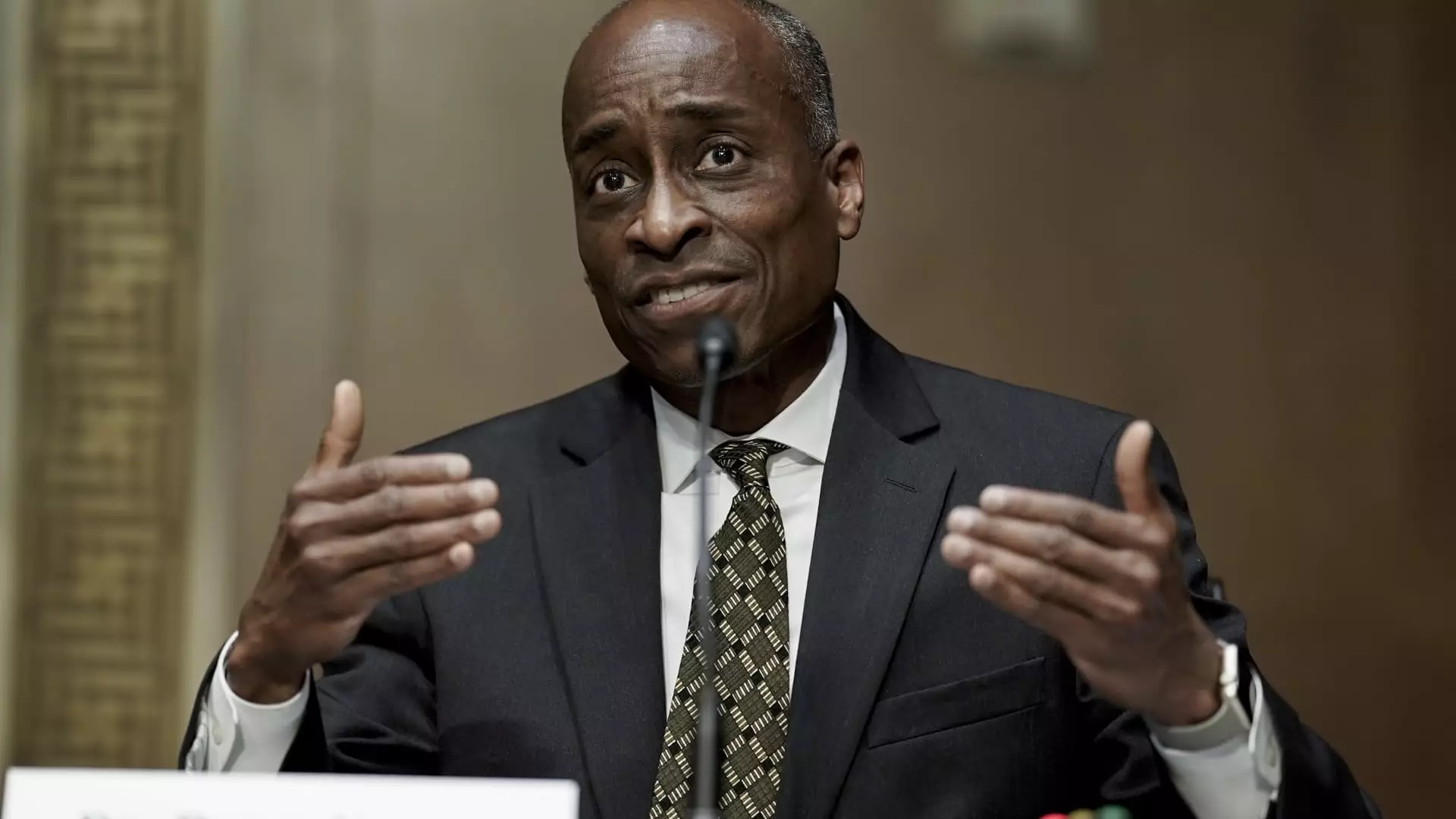The current landscape of the U.S. economy presents a delicate balancing act for the Federal Reserve, where policymakers must carefully navigate the uncertain waters of interest rate adjustments. Vice Chair Philip Jefferson’s recent comments have shed light on the need for caution as the central bank strives to maintain economic stability while adjusting its monetary policy in response to evolving conditions. As the Fed evaluates its next steps, several key factors emerge that could influence their decisions.
Jefferson’s evaluation of the economy reveals a sense of cautious optimism. He described the labor market as being in a “solid position,” which signifies substantial job growth and stabilization. Furthermore, inflation appears to be subsiding following a tumultuous period of rising prices that reached alarming peaks. This evolving inflation narrative is essential as it aligns with the Federal Reserve’s critical goal of achieving a stable 2% inflation rate. Given that recent data shows inflation cooling to 2.6% year-over-year, the Fed seems to have a potential opportunity to remain vigilant but not overly aggressive in its policy adjustments.
However, Jefferson’s remarks highlight that the path ahead may not be linear. The economy’s recovery might be what he described as a “bumpy” road, suggesting potential risks and volatility in future economic indicators. Policymakers must remain aware of these uncertainties and acknowledge the possibility that the economic landscape could shift unexpectedly, necessitating rapid adaptations to their strategies.
Jefferson emphasized the importance of moving slowly in terms of policy adjustments, a sentiment echoed by several of his colleagues within the Federal Reserve. This cautious approach does not signal indecision; instead, it reflects a strategic acknowledgment that the economic environment is complex and ever-changing. The recent decision to hold the federal funds rate steady between 4.25% and 4.5% illustrates this prudent strategy. Affected by rapid increases in rates aimed at curbing inflation, this wait-and-see stance allows the Fed time to analyze the impacts on a broader economic scale.
The phrase “gradual reduction” resounds throughout Jefferson’s speech, indicating an intent to shift towards a neutral interest rate environment cautiously. This tempered approach suggests a deep understanding of monetary policy’s cascading effects—where hasty alterations can inadvertently destabilize the labor market or exacerbate inflationary pressures. By fostering a predictable and stable monetary policy atmosphere, Jefferson and the Fed aim to provide businesses and consumers with the confidence needed to make decisions that bolster economic growth.
The current economic landscape is influenced not only by domestic conditions but also by global developments. Jefferson noted uncertainties surrounding U.S. trade policies and tariff negotiations, particularly those involving major partners like Canada, Mexico, and China. The ramifications of these international relations can ripple through the economy, affecting everything from consumer prices to corporate investments.
Amid these geopolitical considerations, Jefferson recognized the inherent uncertainties in forecasting economic trends. This highlights the Fed’s challenge—they must act based on information subject to change yet remain proactive in their policy formulations. His caution regarding the unpredictability of future inflation rates further emphasizes the need for vigilance. The acknowledgment of various scenarios suggests that even with a stable labor market, the Fed’s policy could adapt based on inflation’s trajectory.
Looking Ahead: Scenarios and Strategies
The Federal Reserve, under the cautious guidance of officials like Philip Jefferson, is navigating a complex and shifting economic environment. As they balance the need for a stable monetary policy with vigilance against potential economic turbulence, their actions will be critical to shaping the economic landscape in the coming months. The Fed’s willingness to envision a variety of scenarios not only demonstrates preparedness but also reinforces their commitment to sound economic stewardship.
As both policymakers and the public watch closely, the objective remains clear: achieve a harmonious balance that fosters sustainable economic growth without igniting inflationary pressures. With time, it may become evident whether the Federal Reserve’s cautious approach is indeed the right strategy or if a more assertive intervention is warranted in response to an increasingly unpredictable economy.


Leave a Reply